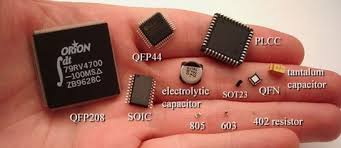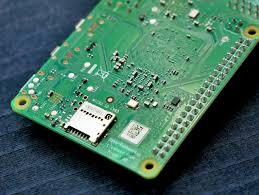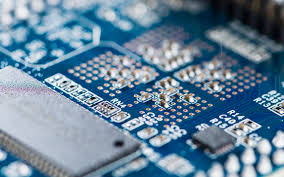Content Menu
● Introduction to Surface Mount Technology
● Essential SMT Equipment
>> Solder Paste Printer
>>> Benefits of Solder Paste Printers:
>> Pick and Place Machine
>>> Benefits of Pick and Place Machines:
>> Reflow Oven
>>> Benefits of Reflow Ovens:
>> Inspection Equipment
>>> Benefits of Inspection Equipment:
>> Cleaning Equipment
>>> Benefits of Cleaning Equipment:
>> Test Equipment
>>> Benefits of Test Equipment:
● The Importance of Each Equipment Type
● Trends in SMT Equipment
● Conclusion
● Related Questions
>> 1. What is the role of solder paste in SMT?
>> 2. How does a pick and place machine work?
>> 3. Why is inspection important in SMT?
>> 4. What are the benefits of using a reflow oven?
>> 5. How can manufacturers improve their SMT processes?
Surface Mount Technology (SMT) has revolutionized the electronics manufacturing industry by allowing for more compact and efficient designs. As the demand for smaller, more powerful electronic devices continues to grow, understanding the essential equipment for SMT becomes crucial for manufacturers. This article will explore the various types of equipment necessary for implementing SMT effectively, the benefits of each, and how they contribute to the overall efficiency of the manufacturing process.

Introduction to Surface Mount Technology
Surface Mount Technology is a method used to mount electronic components directly onto the surface of printed circuit boards (PCBs). Unlike traditional through-hole technology, where components are inserted into holes drilled in the PCB, SMT allows for a more compact design, enabling higher component density and improved performance. The equipment used in SMT plays a vital role in ensuring the quality and reliability of the final product.
Essential SMT Equipment
Solder Paste Printer
A solder paste printer is one of the first pieces of equipment used in the SMT process. It applies solder paste to the PCB in precise locations where components will be placed. The printer uses stencils to ensure that the solder paste is applied accurately, which is critical for creating reliable solder joints.
Benefits of Solder Paste Printers:
- Precision: Ensures accurate application of solder paste, reducing defects.
- Speed: Increases production speed by automating the paste application process.
- Consistency: Provides uniform paste thickness, which is essential for quality solder joints.
Pick and Place Machine
The pick and place machine is a crucial piece of SMT equipment that automates the placement of components onto the PCB. These machines use robotic arms to pick components from a feeder and place them onto the solder paste-covered pads.
Benefits of Pick and Place Machines:
- High Speed: Capable of placing thousands of components per hour, significantly increasing production efficiency.
- Accuracy: Reduces human error in component placement, ensuring that components are positioned correctly.
- Flexibility: Can handle a wide variety of component sizes and types, making it suitable for diverse production needs.
Reflow Oven
After components are placed on the PCB, the next step is to solder them in place using a reflow oven. This equipment heats the PCB to melt the solder paste, creating a strong bond between the components and the PCB.
Benefits of Reflow Ovens:
- Controlled Heating: Provides precise temperature control to ensure optimal soldering without damaging components.
- Scalability: Suitable for both small and large production runs, making it versatile for different manufacturing needs.
- Quality Assurance: Ensures consistent solder joints, which are critical for the reliability of electronic devices.
Inspection Equipment
Inspection equipment is essential for ensuring the quality of the SMT process. This includes both automated optical inspection (AOI) systems and manual inspection tools.
Benefits of Inspection Equipment:
- Defect Detection: Identifies defects such as misaligned components, insufficient solder, and other issues before the final product is assembled.
- Quality Control: Helps maintain high-quality standards by ensuring that only defect-free products proceed to the next stage of production.
- Process Improvement: Provides data that can be used to improve the SMT process over time.
Cleaning Equipment
Cleaning equipment is necessary to remove any residues from the PCB after soldering. This is important for ensuring the longevity and reliability of the electronic devices.
Benefits of Cleaning Equipment:
- Residue Removal: Effectively removes flux and other contaminants that can affect performance.
- Enhanced Reliability: Ensures that the final product is free from substances that could lead to corrosion or failure.
- Compliance: Helps manufacturers meet industry standards for cleanliness in electronic assemblies.

Test Equipment
Finally, test equipment is essential for verifying that the assembled PCBs function correctly. This includes functional testers, in-circuit testers, and boundary scan testers.
Benefits of Test Equipment:
- Functionality Verification: Ensures that each PCB operates as intended before it is shipped to customers.
- Fault Isolation: Helps identify specific issues in the assembly process, allowing for targeted improvements.
- Quality Assurance: Provides confidence in the reliability of the final product, which is crucial for customer satisfaction.
The Importance of Each Equipment Type
Each type of SMT equipment plays a critical role in the overall manufacturing process. From the initial application of solder paste to the final testing of assembled PCBs, the equipment used must work in harmony to ensure high-quality products. The integration of these machines into a cohesive production line can significantly enhance efficiency, reduce costs, and improve product reliability.
Trends in SMT Equipment
As technology continues to evolve, so does the equipment used in Surface Mount Technology. Some of the current trends include:
- Automation: Increased automation in SMT processes is leading to higher efficiency and reduced labor costs.
- Smart Technology: The integration of IoT and AI in SMT equipment allows for real-time monitoring and predictive maintenance, improving overall productivity.
- Miniaturization: As electronic devices become smaller, SMT equipment is also evolving to handle smaller components and tighter tolerances.
Conclusion
In conclusion, the equipment used in Surface Mount Technology is essential for the efficient and reliable production of electronic devices. From solder paste printers to test equipment, each piece of machinery plays a vital role in ensuring that the final product meets quality standards. As the industry continues to evolve, staying updated on the latest equipment and technologies will be crucial for manufacturers looking to maintain a competitive edge.

Related Questions
1. What is the role of solder paste in SMT?
Solder paste is a mixture of solder and flux that is applied to the PCB to create solder joints when heated. It is essential for ensuring strong electrical connections between components and the PCB.
2. How does a pick and place machine work?
A pick and place machine uses robotic arms to pick components from feeders and place them onto the PCB at precise locations, ensuring accurate assembly.
3. Why is inspection important in SMT?
Inspection is crucial for identifying defects in the assembly process, ensuring that only high-quality products proceed to the next stage of production.
4. What are the benefits of using a reflow oven?
Reflow ovens provide controlled heating to melt solder paste, ensuring strong solder joints while preventing damage to components.
5. How can manufacturers improve their SMT processes?
Manufacturers can improve their SMT processes by investing in advanced equipment, implementing automation, and regularly reviewing and optimizing their production workflows.




















